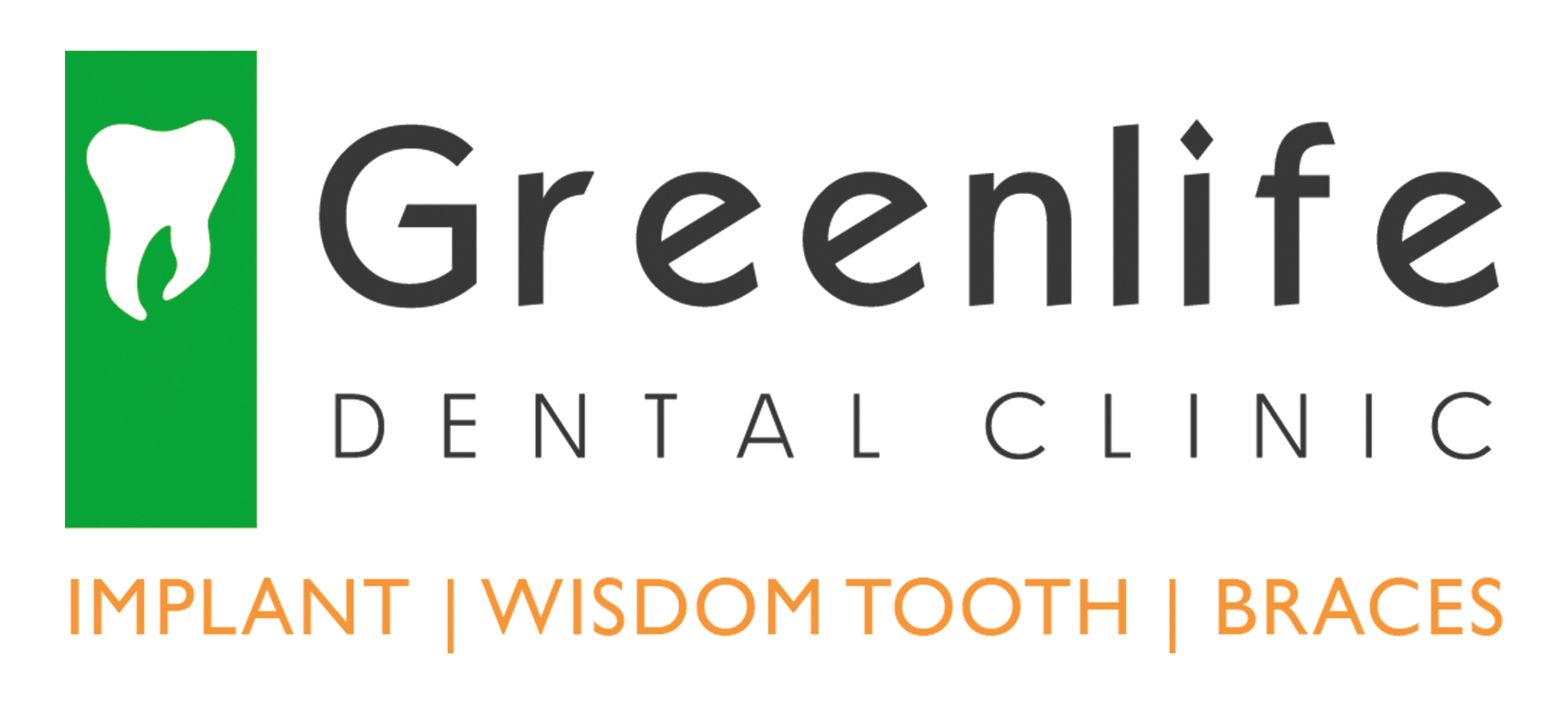Scaling, Fillings, Extraction Of Baby Teeth, Teeth & Jaw Development Assetment
Our baby teeth actually form even before we are born, during the pregnancy stage of our mothers.
That is why it is important for pregnant women or those planning to get pregnant to have a complete dental check-up to tackle any gum disease and tooth decays that may complicate the pregnancy.
Your child would experience his/her first tooth eruption of the lower Incisors about 6-8 months old. More new baby (primary or deciduous) teeth will continue to erupt till the age of 2.5-3 years old when all (20) teeth are present in the mouth (10 upper, 10 lower).
The complete set of baby teeth is in the mouth from the age of 2.5-3 to 6-7 years of age.
- A general rule of thumb is that for every 6 months of life, approximately 4 teeth will erupt.
- Girls generally precede boys in tooth eruption
- Lower teeth usually erupt before upper teeth
- Teeth in both jaws usually erupt in pairs — one on the right and one on the left
- Primary teeth are smaller in size and whiter in color than the permanent teeth that will follow
- By the time a child is 2 to 3 years of age, all primary teeth should have erupted
Primary Teeth Eruption Chart
 The following chart shows when baby teeth erupt and shed. It’s important to note that eruption times can vary from child to child.
The following chart shows when baby teeth erupt and shed. It’s important to note that eruption times can vary from child to child.
Do not be alarmed if your child has their tooth erupted too early or too late for his/her age. Bring your child to see us is you are worried about their tooth development process.
It is a great chance for your child to experience dental care first hand at an early age to familiarise himself/herself the role of the dentist in their lives.
Shortly after age 4, the jaw and facial bones of the child begin to grow, creating spaces between the baby teeth.
This is a perfectly natural growth process that provides the necessary space for the larger permanent teeth to emerge.
Between the ages of 6 and 12, a mixture of both baby teeth and permanent teeth reside in the mouth.
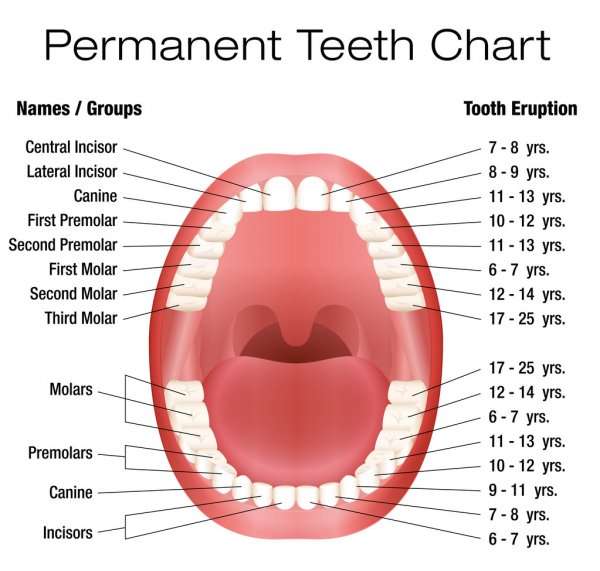 The first permanent teeth begins to erupt around the age of 6-7, most frequently the first lower permanent molars.
The first permanent teeth begins to erupt around the age of 6-7, most frequently the first lower permanent molars.
By the age of 13-14, most of the 28 permanent teeth should be in the mouth.
The wisdom teeth or third molars, will erupt between the age of 17-21, adding to the total number of teeth in the mouth to 32.
Not everyone has all the 32 teeth as an adult, some will have more or less than 32 teeth.
The number of teeth in the jaws can be easily counted with the help of dental X-rays.
If the Baby Teeth will Fall Out After a Couple Of Years, Why is it Important to Care For Them?
While it’s true that primary teeth are only in the mouth a short period of time, they play a vital role in the following ways:
- They reserve space for their permanent counterparts
- They give the face its normal appearance
- They aid in the development of clear speech
- They help attain good nutrition (missing or decayed teeth make it difficult to chew causing children to reject foods)
- They help give a healthy start to the permanent teeth
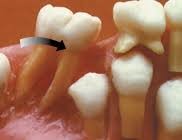 So it is very important to keep the set of baby teeth in good health. Any decay of the baby teeth should be fixed to prevent premature loss of the baby teeth as this tend to disrupt the proper sequence of eruption of permanent teeth.
So it is very important to keep the set of baby teeth in good health. Any decay of the baby teeth should be fixed to prevent premature loss of the baby teeth as this tend to disrupt the proper sequence of eruption of permanent teeth.
The neighbouring adult molar will then drift into the empty space caused by the premature loss of the baby tooth and block the path for the eruption of the future adult tooth (premolar).
This will lead to crowding of adult time in the future and will need to receive braces (orthodontic) treatment to correct the crowding.
When Do I Take My Child to the Dentist?
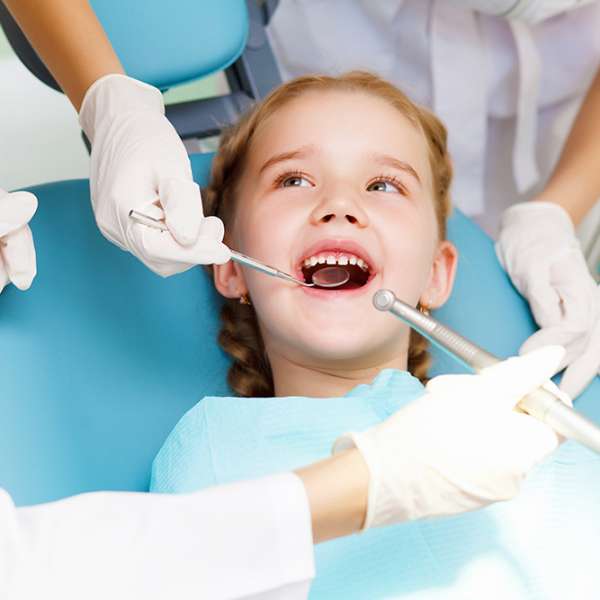 It is recommended to take your child to the dentist within 6 months after the first teeth appear or at 12 months of age, whichever comes first.
It is recommended to take your child to the dentist within 6 months after the first teeth appear or at 12 months of age, whichever comes first.
Regular dental visits are essential to teach your child good dental hygiene and to help prevent cavities and other problems.
The examination also helps to identify and treat problems early and prevent them from becoming more serious.
What Happens At The First Visit?
The primary objective of the first visit is to have the child get used to sitting in a dental chair and also educating both parent and child on how to care for the child’s teeth.
How Can I Prepare My Child For The First Visit?
- Have a conversation with your child about the visit. Explain simply what will happen. Eg thedentist may “count” and “take pictures” of his or her teeth”.
- Avoid sharing any fears you have to your child. Don’t use words like “pain”, “drilling,” or “needles.”
- Show your child videos/books that explain what it is like to go to the dentist – These pictures help your child to have a mental image of what to expect.
- An activity you can do is to get your child to draw a picture of his or her mouth and teeth to take to the dentist. The dental visit can begin with your child sharing about this picture.
- Never bribe your child into going to the dentist (with more sweets!) or use a dental visit as a punishment.
With the combined effort of both parent and dentist, it is possible to carry out procedures such as scaling and polishing, fillings, simple extractions as well as assessment of teeth and jaw development at our clinic.
Our dentist can recommend early interceptive treatment to rectify certain issues with the teeth before they become more complex at later years.
Fillings for Children
Children teeth are also prone to tooth decay due to poor oral hygiene and early exposure to sugar either in the form of milk or other sugary food/drinks they consume.
Tooth decay (cavity or hole in teeth) progress more aggressively in children because of the thinness of the tooth structure compared to the adult teeth.
The pulp (nerve) of the baby tooth is much larger and closer to the surface of the tooth, thus easier and faster for the bacteria (germs) to penetrate the pulp and cause severe toothache.
Root-Canal Treatment For Children (Pulp Therapy)
If the decay kills the baby tooth, there is only 2 ways to treat the pain. Either by extraction which will lead to the premature loss of the infected baby tooth or save the baby tooth with a root-canal treatment.
Root canal treatment for children teeth involved the removal of the diseased/dead top portion of the pulp (nerve) and then covered the deeper and uninfected pulp tissue with a medication to keep them alive.
The baby tooth is then restored with a filling, and or a crown to protect it from fracture and further decay. This treatment is to extend the life span of the infected baby tooth till the right time for it to drop off by itself, otherwise would had been prematurely lost by extraction.
Preserving the space by the keeping the baby tooth helps to prevent crowding of the teeth by allowing proper eruption sequences of the adult teeth to take place.
Extraction For Children
Extraction of the baby tooth occurred in a few clinical situations. Baby tooth may be extracted if it is badly decayed that cannot be saved by pulp therapy or removed to relieve pain and saving it was not a choice.
Traumatic injuries to the baby front teeth is common as they are learning to walk and run, frequently chipping or worse fracturing the baby teeth went they hit their teeth against the floor or other hard objects like chairs and tables.
If the chip or fracture is minor, it may be repaired or smoothen till they are ready to drop off naturally around the age of 6-7 years old. If the fracture is bad, involving a large portion of the tooth, then they may need to be removed by extraction.
The most common form of extraction of baby teeth is when they are become mobile and shaky as the roots are shortened by the erupting adult teeth below them. This is a natural process and nothing to be alarmed.
The child may experience some pain or discomfort when biting on the shaky baby tooth. To reduce further discomfort and to speed up the eruption of the emerging adult teeth, these shaky teeth can be removed by the dentist.
Teeth And Jaw Development Assessment
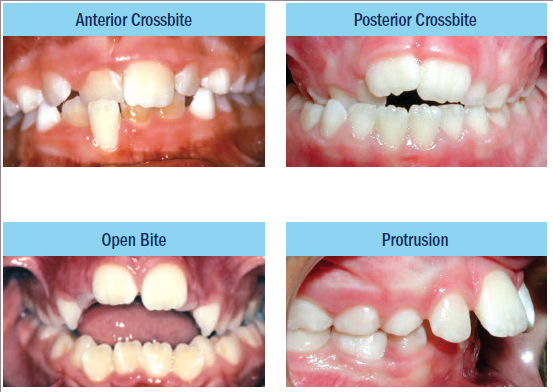 There will be tremendous oral, dental and facial changes due to growth during the early development of the child. Baby teeth first erupt, followed by eruption of new permanent adult teeth and replacement of baby teeth.
There will be tremendous oral, dental and facial changes due to growth during the early development of the child. Baby teeth first erupt, followed by eruption of new permanent adult teeth and replacement of baby teeth.
Finally, the child would have a full set of adult teeth around the age of 13-14 years old. As the teeth are erupting, the surrounding jaw bone and face are growing and enlarging to accommodate more teeth that are growing into the mouth.
This is the time to monitor how the teeth and jaw bone growth are co-ordinated. Sometimes the teeth erupting sequences are disturbed by delay or premature loss of baby teeth, other times the jaw growth may be hindered or exaggerated by certain genetic component.
Certain oral habits like finger sucking or prolonged use of pacifier, also prevent the erupting new teeth to come into proper contact with each other.
It is good idea to bring your child for regular check and preventive treatment in order to monitor that the teeth and jaw development is occurring in the correct stages.
There are warning signs of incorrect development and the dentist may be able to intervene the process of growth, to improve the situation or at least make it less severe so that treatment will be easier in the future when the child has grown up.
